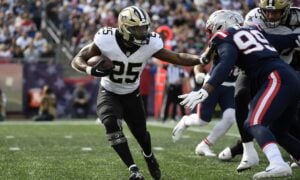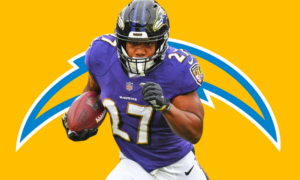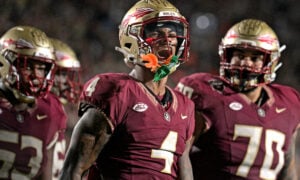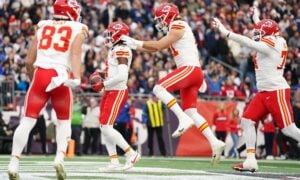How IDP Leagues Should Be Built: Big Play Hunter
One of the more frustrating things for those of us who indulge in IDP is the reference to “standard” scoring vs PPR. It’s not that simple of course any more but the very notion that you only have two main options and one of them is “standard” is frustrating. In the IDP world, there are nearly as may scoring systems as there are leagues. So when we talk to each other about rankings and players and all of the things we like to debate, we have to couch it with statements like “in my league”.
This off-season the IDP crew at DLF are trying to start a serious debate about how IDP baseline settings could be defined. Not to try and work out what’s “best”, but just to try and bring some stability and compatibility. Within that conversation I want to make the case for the sort of scoring I believe in – Big Play.
When we talk big play, we basically mean that the core big plays (interceptions and sacks) should be worth at least four times the amount of fantasy points that a tackle is. If a tackle is worth one point a sack is worth four. If a tackles is worth two points a pick is worth eight. And so on. I also believe we should give more credit for plays like forced fumbles and passes defended.
The eagle-eyed amongst you will see that I recently wrote another article on DLF that touched on some of these points. The distribution of talent and statistics is the key reason for me favouring big-play, so I’ve used some of the same rationale here. I talk about the same concepts a lot. What else do you expect from an obsessive?
Distribution – The Hard Problem
In fantasy football we’re striving to combine predictability of data with the surprise of sports. We want a baseline where we broadly understand who’s good and who’s bad but we also need an element of chance and excitement. Knowing in advance who would win wouldn’t be fun of course.
In offensive FF then we as a community are quite far along. We can make some half-decent predictions and we understand the variability of the random element. We might not know which player will explode this year but we can make some intelligent guesses. The problem with IDP is that the total population of viable IDP players is so much bigger so the pools we’re trying to predict, stratify and analyse are much more variable.
As an example there are roughly viable 48 running backs per week (assuming 1.5 per team) that will be the basis of the better scoring ones in a given week. A player from outside the top two options on his team might have a huge week but it’s unusual for it to happen. So in a standard (there’s that word again!) league of 12 teams you’d expect most dynasty teams to have four RBs that could conceivably be good starters. And most leagues will let you start two to four of them. So with 24-36 starters of a pool of 48 you have a decent chance of picking good ones.
Now let’s consider linebackers. Most IDP leagues will let you start three or four of them. But the average week there will likely be between 64 and 96 (assuming two or three per team) viable linebackers who could perform with 36 fantasy starters. Every week in most leagues there are likely good scorers who were on the bench or even waivers.
This is indicative of offense vs defense. Because we don’t play offensive linemen in fantasy (most of us – that’s too far even for me) there are twice as many IDPs available as there are offensive players. There are two main solutions to this and each has significant drawbacks:
1. Parity
Top IDPs score similar to their offensive equivalents. The RB1 would be similar to the LB1. This seems lovely and neat but because of the distribution issue it means that there will be lots more IDP options than offensive.
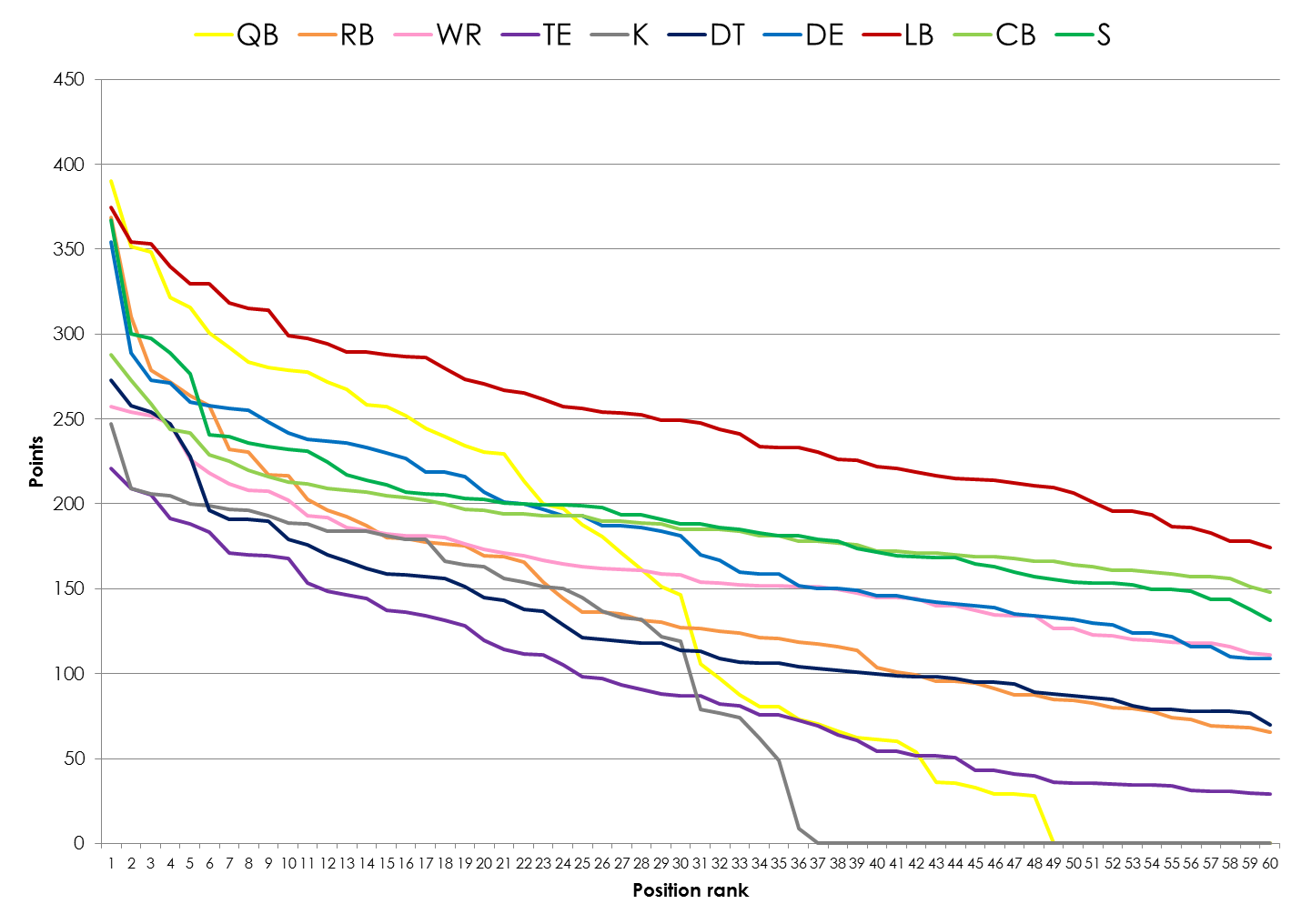
As you can see if top LBs are set as equalised then suddenly there are many high-scoring options further down the ranks.
2. Inferiority
IDPs score less than offensive players. This prevents a boatload of high scoring players always being available but it reduces the effectiveness of top IDPs. Luke Kuechly or Khalil Mack or Landon Collins will never be equivalent to Ezekiel Elliott or Antonio Brown.

Here you ensure that there aren’t hordes of high-scoring IDPs but the top options are relatively low-scoring compared to offensive positions.
I believe big play scoring is an excellent solution to this problem. There are many IDPs available but the number of big plays is actually fairly small. There just aren’t that many picks or sacks in games compared to tackles or big runs or catches. Here’s what the distribution look like:

In any given season there are four to six times as many tackles as total big plays. If you award double the number of points for a big play compared to tackle you’re vastly underestimating the frequency of said play occurring.
Reward big time plays that change games
The basic unit of currency in IDP is the tackle. One occurs on most plays in the NFL and most defensive players record some every game so we’re really familiar with them. They’re visceral and look good on film so the player making the tackle is clearly doing A Good Thing. Players normally have similar amounts of tackles week by week and season by season so we feel comfortable they’re predictable and quantifiable. The more tackles a player makes the better he is at football and the better he should score in fantasy.
Except of course that NFL coaches are smarter than us. So they specifically target the worst players. Here are two players who played on the same NFL team in 2016:

Player A was the better player right? He had far more tackles after all. Of course it’s wrong. Those two players are Logan Ryan and Donta Hightower. Admittedly Ryan played 150 more snaps but he also had far more tackles. Because opposing teams knew Hightower is a beast against the run whilst Logan Ryan is the worst patriot defender against it. So of course they targeted him. In IDP this is easily exploited – but it’s not how the game should work. I want to pick good players and be rewarded when I figure out who really is good rather than profit from being able to spot bad ones and taking advantage.
Make IDP accessible
When you’ve got a receiver or a running back on your fantasy team it’s easy to catch their big moments on Redzone and to cheer them. You mostly can’t miss them. With tackle-heavy IDP leagues then you have to watch whole games to really gauge whether your players are being effective. You can watch the points add up on MFL but it’s not as exciting. In a big-play world then the plays you really want are the ones that get shown on Redzone. That opens up IDP to more people. I’ve lost count of the number of people that tell me they don’t play IDP because it’s too complicated or there’s too much to learn. If we shifted emphasis from Telvin Smith, Tahir Whitehead and Antoine Bethea towards Von Miller, Vic Beasley and Eric Weddle then those people might feel like their actual football knowledge would be worth more.
Minimize the influence of biased amateurs
The way I tend to think about football is numbers first. I want to be able to model data to see trends. But doing that requires accurate data. You’d think in this era of media attention that would be a given but of course it’s not. Defensive statistics are still compiled by teams provided by the home team who have their own idiosyncratic ways of assigning statistics. The Seahawks’ stat crew hand out assists like candy on Hallowe’en but are stingy with solo tackles. The Jags’ crew like to give credit for solos but very few assists. It’s not an easy job. Next time you’re watching a football game try assigning credit to each and every tackle. It’s tough to see through all the bodies on the line. But again I want IDP scoring to be about who is actually good at football rather than simply knowing enough about the dirty methodology that I can game the system.
On the other hand big plays are pretty inarguable most of the time. Passes defended, interceptions, fumbles forced… Not only do they tend to be clearer they also tend to be replayed more in slow-mo. So there are fewer errors about who is credited with those plays. Big play scoring takes control away from stat crews and assigns it to the players who make big plays.
The fallacy of balanced leagues
Plenty of us play in leagues where we believe that our scoring system is perfectly balanced between big-play and tackle-heavy. Again, I wrote recently on why balanced leagues don’t exist. I wholly endorse ways to make top NFL players like Justin Houston viable fantasy options, but this comes back to distribution. If you offer many different routes to scoring well, then you have many players available who all score well. This means everyone in your fantasy league has access to them, and the flaws I discussed earlier are still in play. I say instead of being best-of-both-worlds options, most leagues like this are actually worst of both worlds. They make bad players who accumulate stats due to being targeted viable but not dominant. So randomness increases and you end up with only rudimentary predictiveness. You’re just picking players and crossing your fingers.
Summary
Fantasy football is a game where we like to think that if you know more about the real NFL we’ll be more successful. IDP as a concept is great at that because we follow and watch and love the whole sport. Not just the glory boys who carry the ball. But it’s fundamentally flawed right now because we overemphasise the tackle. Top tacklers can easily be poor players and top NFL players can be unusable fantasy options. I think it’s high time we did something about that and agreed as a community that we should reward real playmakers making plays that alter games. Not just a series of minor plays that are randomly assigned statistically by non-accountable stat-keepers.
Here are the key points that you need to consider:
- If your top IDPs score similar amounts to top offensive players there will likely be too many IDP options. Which means everyone will have good options there.
- You don’t have to have the same number of starting IDPs and offensive players on your team. More IDPs who score a bit less is conducive to balanced availability.
- Big plays are at least four times harder to achieve than tackles. Adjust scoring appropriately.
- Passes defended should be a key stat in your scoring. They’re huge plays and the good players tend to make them.
- Fumbles forced are more indicative of good players than fumbles recovered. Adjust accordingly.
- Interceptions, forced fumbles, defended passes and sacks routinely win games in the NFL. It’s very rare a tackles wins a game.
- Tackles for a loss on early downs often stall drives. Standard solo tackles rarely do.
- Ten IDP Fantasy Football Stats You Need to Know after Week 16 - December 29, 2023
- Ten IDP Fantasy Football Stats You Need to Know after Week 15 - December 22, 2023
- Ten IDP Fantasy Football Stats You Need to Know after Week 14 - December 14, 2023







